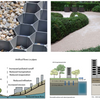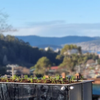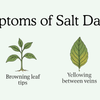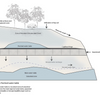What to do in your wicking bed this month - Dec 20
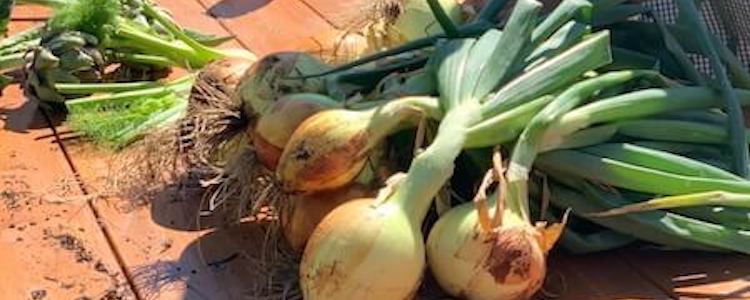
Posted: 22nd December 2020 by Eric Sturman and Ian Collins
Getting started with your wicking bed
This post is designed to be the first in a series, that will give you heaps of practical advice on how to ensure that your wicking bed performs optimally. We will try to address the different challenges that may be faced by the different climatic zones across Australia over the course of the year. We would also welcome your suggestions as to topics and issues that you would like us to address. So here goes...
Today, your WaterUps® wicking bed has arrived. It’s out of the box and all put together. You’ve chosen a spot in your garden that gets the most amount of sunlight and the bed is nice and level. You have also added perlite to the 4 wicks/feet of each cell - click here to use the WaterUps® Calculator to check that you have the correct quantity. Now what?
Soil Mix
You will need to get some soil/potting mix. There are so many types to choose from, so which one is best. No matter if you are buying in bulk from a landscape supplier, or in bags from the hardware store, you will be best served by something that is intended for use in vegetable gardens. Still too many to choose from? You can narrow the selection by ensuring that the mix has a 5 Ticks StandardsMark™ Certification. Many products don’t, and they are best avoided. You will need 16 x 25L bags, or ½ cubic metre of vegetable garden mix per Oasis 1680 wicking bed. The Oasis 1240 bed will need 6 x 25L bags to fill. If you have a different sized bed that you have fitted with WaterUps® you can also easily work out how much you will need using the Calculator. Fresh soil/potting mix from the shop will be perfect to start growing in straight away, but every time you grow and harvest a crop from your soil mix it will become a little more depleted and will need to be enriched between plantings.Compost and Manure
So, what to add? The short answer is organic matter, but there are many types to choose from. Manures are great and cheap. Being a byproduct of the farming industry they are in plentiful supply. However, you should be mindful that most animals are treated with antibiotics, worming agents, and in some cases hormones. The levels of these are small, and these products have usually been pre-composted, with most of the nasties being broken down before they get to you. The disadvantage of manures is that they are usually very high in Nitrogen and better suited to nourishing the soil before a leafy crop such as cabbage or lettuce. Compost is regarded as the best source of organic matter for the vegetable garden. Compost is only as good as what went into making it. Commercially available composts are made from the green waste you put out on bin night. This is mainly made up of hedge and lawn clippings. Once again high it is in Nitrogen. The best compost is the compost that you make at home. This should be made up of all the types of vegetables and fruit that you eat, resulting in a more balanced compost. We will give you a guide to making a compost pile in a future blog. Organic matter should make up between 5 and 10% of your garden soi/ potting mix, so your Oasis 1680 will need one bag, or the loose equivalent each time you replant. This could be up to four times a year depending on what plants you grow.Mulch
Mulch is essential for any garden. Mulch helps keep the surface soil moist, although your wicking bed is already doing a great job at that. It also keeps sunlight from the soil making it much harder for weed seeds to germinate. Finally, as the mulch breaks down, it adds valuable organic matter to the soil. There are many types of mulch available and they will all do the job, but only one mulch is a 'by-product' and that is sugar cane mulch. Others are 'end-products' and therefore arguable less attractive from a sustainability perspective. Sugar Cane is also a little bit waxy and, therefore, lasts a bit longer than the other vegetable garden mulches such as pea straw or lucerne mulch. Lucerne and pea straw do have the advantage of being a leguminous plant, they are high in nitrogen and do add a lot to the soil, but they break down very quickly and need to be replaced often, sometimes before the crop is ready to be harvested.Fertiliser
Even though you have soil full of all the nutrients needed to grow your crop, they will still need fertilizer to support them through the growing season. There are two types of fertilizer, organic and inorganic. Basically, organic fertilizers feed the bacteria in the soil and the bacteria excrete the nutrients in a form that can be absorbed by the plants. Inorganic fertilizers skip the bacteria step and offer the nutrients in a form that the plants can readily accept. As you are going to the trouble of growing your own vegetables, it can be assumed that you will want to go down the organic path. The two major types of organic fertilizer are pelletized and liquid. You will need them both. The pelletized fertilizer should be mixed through the top 10cm of soil at the time of planting out your seedlings at the rate recommended on the packet. This is usually equivalent to one handful per square metre, so about a handful and a half for your Oasis 1680 bed. There are many types of pelletized fertilizers on the market with all sorts of extras added. If you are finding it hard to decide, let the organic certification help guide you. Liquid fertilizers should be added to your garden beds at fortnightly intervals. The advantage of organic liquid fertilizers is that most of them will contain some seaweed extract. Whilst seaweed extract will not provide nutrients, it is usually contains humic acid, which is essential for the thickening of the plant cell walls. This will give the plants extra resistance and strength to naturally fight off pests and disease. Liquid fertilizers are often made from invasive fish species that have been removed from sensitive waterways around Australia. So while not only being beneficial to your plants, by using these products, you are helping remove pest species from our environment. When choosing a liquid fertilizer be mindful of the type of plants you are growing. Do you want a fertilizer high in Potassium to grown big juicy tomatoes, or a high Nitrogen mix for spinach? Liquid fertilizers should be applied to the soil and leaves of your vegetables as per the directions on the bottle. Your liquid fertiliser should be added to the soil surface and allowed to soak in. We recommend against pouring it directly into the inlet pipe and water reservoir as it may end up settling on the if you do this. You can also use a very diluted version or a light worm tea as a foliar fertiliser. This should be sprayed on the plant leaves in the early morning or after dusk as your worm tea comprises living organisms that will quickly die if exposed to direct sunlight.Diseases and Problems
When we are rundown, or eating poorly, we are most susceptible to colds and illness. Plants are just like us, if your soil is well balanced and the plants have a steady supply of nutrients and water, pests and disease should be minimal. A healthy plant can still be attacked by pests and disease. If and when this happens it will serve you well to be prepared. Organic controls are most effective when applied at the first sign of attack, so if you have a few products on hand you can act fast. In an organic garden, you will need soaps, oils, bacteria, and salts. The soap, or NatraSoap, as it is commercially known, will break down the exoskeleton of many sap-sucking insects such as aphids and thrips. Oils, such as EcoOil, will suffocate insects that have a protective shell or that burrow underneath the surface of the leaf, such as scale or leaf miners. Bacteria, that naturally occur in the soil, are sold as Dipel. This bacterium irritates the digestive system of chewing insects such as the cabbage white moth. Finally, salts in the form of potassium bicarbonate act as a fungicide that can replace the traditional Copper and Sulphur treatments. At most, you will only need a small amount of any of these treatments at any one time. To save waste and constant washing of bottles, I would recommend that you buy a pressure sprayer for each treatment. Four in total will be enough and that ensures that there will always be premixed sprays ready to defend your vegetables.Implements and Essential Garden Tools
The last items you will need to start your growing journey are a watering can, a spade, a garden trowel, and a good quality pair of secateurs. You should also get a 9L watering can, as most of the liquid fertilizer manufactures provide dilution rates for this standard 9L measure. A spade, not a shovel, will help turn the organic matter through the soil between crops. A small garden trowel will be essential for the transplanting of seedlings into your bed and digging up weed seedlings. Finally, you should get the best quality pair of secateurs you can afford. They can be as expensive as $120, but a clean cut on your plants when you are harvesting is critical for a plant's speedy recovery. A clean-cut will offer the least surface area for sap loss and disease attack.
You should now have all you need to get growing. Good luck and keep checking in for more tips on growing happy, healthy vegetables in your WaterUps® wicking bed.
Eric Sturman s a director of WaterUps with degrees in horticulture and Landscape Architecture. Throughout his career he has managed large commercial vegetable gardens and fruit orchards, as well as his own thriving and productive garden in Sydney's north.
-
Posted in
Category_Community Gardens, Category_Garden Wicking, Category_Project Groups>Commercial Projects, Category_Project Groups>Community Projects, Category_Project Groups>Horticulture Projects, Category_Project Groups>Landscape Projects, Category_Project Groups>Residential Projects, Category_Project Groups>School &, ELC Projects, School Gardens, WaterUps Featured




